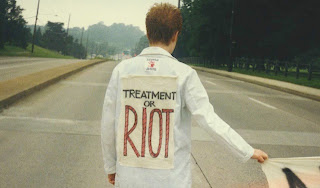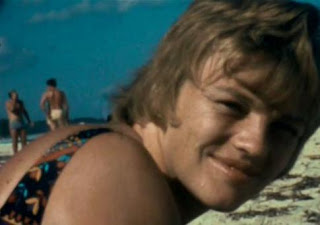How to Survive a Plague
*** out of ****
Directed by: David France
Running time: 120 minutes
A scandalously bloody
blow-up dummy of President Bush (Sr.) flutters in the air like a balloon, as a rainbow
flag – a symbol of the LGBT community – flows in the wind beneath it. The image
exhibits both the inflamed stance and the spirit of AIDS activists during the
late 1980s and early 1990s, which captivated the media's attention to an
egregious lack of spending toward drug testing to quell the disease.
How to Survive a Plague is
the second documentary in the last 18 months to focus on American communities
affected by the AIDS epidemic, where the death toll lingers in the millions. The
other film, We Were Here, was 2011’s best tearjerker, a deeply sympathetic
glimpse at five gay men who lived through the epidemic as it spread through the
streets of San Francisco.
Instead of San Francisco,
the action kicks off in Greenwich Village; ACT UP protesters block traffic and
stage kiss-ins at local hospitals to fight for their lives, as well as in memory of their
friends who are dropping dead.
The ACT UP coalition wants a state
of emergency declared due to the lack of government concern for testing
promising new drugs, or even treating victims – many at St. Vincent’s in New
York were denied access to hospital beds. Some hospitals would place the body
of AIDS victims in black garbage bags once they died. Even worse, some funeral
parlors would not accept the bodies.
Some AIDS sufferers went to
an underground group to receive imported drugs that had not yet been approved
by the FDA. These pills become even more lucrative for the sickly as some of
the promising American-based drugs that became available ended up causing blindness.
ACT UP urged for direct action for drug makers to get this treatment
immediately delivered to the community, bypassing some later test dates.
The film’s most arresting
moment comes from playwright and activist Larry Kramer, who yells, vitriolic,
in the middle of a squabble between ACT UP participants, “Plague! We are in the
middle of a plague!” The furor subsides, instantly.
Other group members read up
on biological research and made pamphlets for AIDS victims and their families
to help them spot symptoms and learn about the nature of the disease.
These protesters, many of whom were victims
threatened with extinction, would not lie down, unless they were trying to make
a point by ‘playing dead’ at demonstrations.
The video footage compiled
by director David France features more televised interviews than home movies of the
subjects’ everyday existence. While these activists scatter their late loved
ones’ ashes on the White House lawn, these powerful moments still lack the
personal insight that made We Were Here so compelling.
Nevertheless, How to Survive
a Plague is a potent and fiercely polemical documentary that highlights the
incredible change to public policy and outlook that came directly from
informed, enraged citizens.






























